On your way to buy a New-to-You vehicle? Don’t leave home without this used car inspection checklist!

Hey there I’m Mike.
If you’re reading this, you’re likely looking to purchase a used vehicle. Heck, just the other week my buddy Ben mentioned he was looking to upgrade his 2001 Hyundai Elantra and asked me what to look for before purchasing his next ride.
That got me thinking and inspired this used car inspection checklist guide. I gotta warn you though, there’s a ton of information below, so if you have any questions, please contact us and I’ll help in any way possible 🙂
Here’s what I look for when buying a pre-owned car, pickup or SUV.
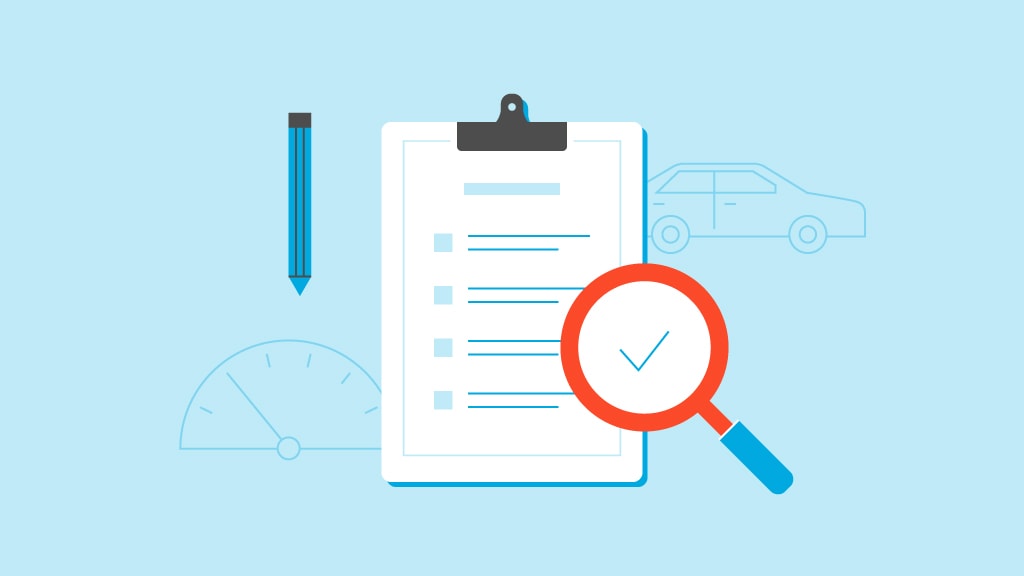
Should you buy from a Dealer or Private Party?
Determine from whom you wish to purchase the vehicle. Dealer cars have plenty of advantages. These include limited warranties, financing options, repair facilities on-site, and others. Generally, dealers want to make a profit over and above the price they paid. That price includes the amount they paid for the car and for any needed repairs. Therefore, their prices will be higher than those of private sellers in a lot of cases.
Dealers – Great if you’re looking for newer vehicles, financing or want to avoid some of the hassle of private sellers. You’ll often pay more at a dealer though!
Private parties – Usually you’ll get a better car from a private seller at a lower price. They typically have more history on who owned the car and how it was taken care of. You may have to deal with more ‘annoyances’ like them missing the appointment, being a sketchy person, etc.
Private sellers can get you a car right away if you have the cash on the barrel. They don’t usually offer financing, however, so if you’re short of cash, the dealer might be your only option. Many times, private sellers want to get rid of the car, so they’ll take any reasonable price. Other times, private sellers will drive hard bargains and might wind up costing the same as a dealer. It’s tough to know, which is why meeting a private seller is such an vital part of buying a used car.
4 Categories When Looking Over the Vehicle
When checking over the car, there are four categories of faults that we like to look for.
- Minor – This shouldn’t affect the vehicle in any way other that cosmetics. Faded paint, minor chips, worn tires, dim lights are usually in this category. Cost to repair is either free or less than $200 bucks.
- Major – These issues can cost $300-$800 to repair, and may affect more than cosmetics of your vehicle. Multiple dents, strange engine noises, faulty electronics fall into this grouping.
- Critical – Something that costs more than $800 to fix, and should be fixed ASAP. Leaking or low fluids, slow brakes, need four new tires, extremely high engine miles, etc.
- Deal Breaker – Something that is a red flag and causes you to walk away from the sale. The trouble and cost for this is usually more than the vehicle. Replacing the engine, flood damage, Title/Lien issues, etc.
Step 1 – Meeting the Seller
Meeting the seller should be in a public place. In today’s day and age, you never can tell about people. The other person is also thinking the same thing about you. It removes any negative pressures in either direction. Talk about the car and observe the other person’s reactions. If you feel iffy at all, walk away.
[su_panel background=”#fbfbfb” shadow=”2px 2px 2px #eeeeee” radius=”4″]Bring a friend
Have any mechanic friends? Now is the time to bring them with. Maybe you’ll have to bribe ’em with a six-pack of Budlight or a Ribeye from Outback SteakHouse, but it’ll be cheaper than buying a Lemon Car!
[su_icon_text icon=”icon: exclamation-circle” icon_color=”#ff6666″]If you want to do a test drive, always have a buddy with you. In Canada, Tim Bosma got into a truck to test drive, and never came back. If you get any bad feelings about the deal, the car itself, or the seller, just walk away. A good deal is not worth your life.[/su_icon_text] [/su_panel] [su_panel background=”#fbfbfb” shadow=”2px 2px 2px #eeeeee” radius=”4″]Seller’s Age
Now I’m not trying to rip on anyone here, but I was once a strapping young lad with a ’97 Mustang GT 4.6L, 5 speed and a need-for-speed… and let me tell you, I wasn’t easy on that car! 🙂
Most younger folks seem to have a heavier foot than their older counterparts. So one of the first things I look at is the age of the seller.
If you’re purchasing granny’s 1990’s Town Car that she shuttled herself to Church on Sundays, you have a better shot at getting a gently used vehicle than if you purchased my teenage-owned-Mustang!
[/su_panel]7 Quick Questions for the Seller
1. Why Is the Car for Sale?
Here’s something that may surprise you. Honest people sell used cars too. A widow who no longer needs her deceased husband’s used Cadillac won’t hesitate to tell you why she doesn’t need the car anymore.
2. Are Maintenance Records Available?
Ask for maintenance records if they are available. Make sure that the previous owners did oil changes, tune-ups, and spark plug changes on time. I also like to know if they used Synthetic or Conventional fluids.
3. How Many Owners?
A car that has a lengthy ownership history may be hiding faulty wiring or engine troubles. You’ve found a gem if your chosen pre-owned car only had a single owner.
4. Has the Car Been in an Accident?
Cars that have been in major accidents may be less safe and reliable than those that have braved the highways drama free. Accident-related repairs often show up on Carfax reports. You can also spot a vehicle that’s had extensive bodywork by looking for Bondo-work on the paint panels.
5. Can I take it to My Mechanic for an Inspection?
If you can get an expert to look at the vehicle before you buy it, it’s wise to do so. A mechanic can run comprehensive diagnostics on the car to find both minor and significant issues. The cost should be less than $100 bucks.
6. Can I Take it for a Test Drive?
During the test drive, take the car on main roads and highways to size up its performance. We’ll talk more about this further down.
7. Has the Car Been Recalled for Repairs?
If a manufacturer recalls a car for repairs, the car owner can take the vehicle to an authorized dealer to get the repairs done for free. If that owner doesn’t take care of the problem within a set time, he or she must pay for the repairs.
Step 2 – Exterior
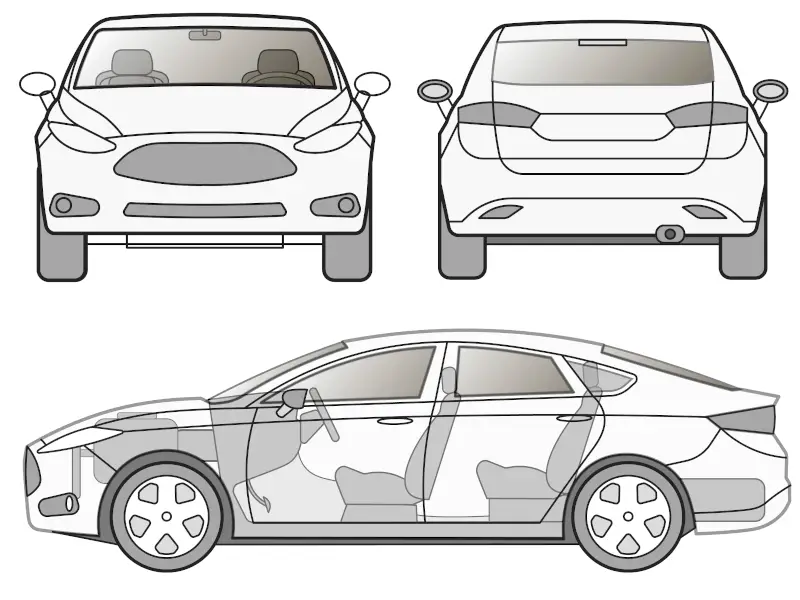
Vehicle exteriors pick up lots of dings, dents and paint fading through normal wear-and-tear. Usually a little spray wax or a nice bath would clean them up 🙂 Many of these are not performance or safety-affecting, but there are a few things to watch for.
Minor concerns might include:
- Faded paint
- Missing or burned-out headlamps or turn signals
- Small scratches
- Small dents
- Pings from rocks
- Squeaky Brake pads
Major issues would be something that would cost more to fix and may affect the safety of your ride.
You would want to have these items repaired soon, and they cost $200+ dollars to fix.
- A cracked windshield or other windows
- Large dent or multiple dents
- A missing side-view mirror
- Fluids under the car
- Multiple rusted areas
- Multiple bald tires or uneven wear (indicating bad Ball Joints or Wheel Bearings)
- Body damage that affect driving (Bent frame or panels)
- One or more damaged windows
- Bent frame. Even if a frame is straightened, it is never as strong as it was before.
- New paint job for the whole car.
- Multiple major faults would add up to a deal-breaker. Something like needing four new tires, a new windshield, and a body panel painted.
Step 3 – Interior

While the exterior of the car is all about safety and drivability with looks a distant third, the interior of the car is mostly about looks and comfort.
Minor issues with the interior are either easily ignored or fixed, and those fixes wouldn’t cost much.- Flaky leather
- Chip on the inside door panel
- Missing knob on the sound system
- Broken seat belt (check out our seat belt repair guide)
- Faulty dashboard electronics of any kind
- Damaged gear shift
- Faulty climate control
- Seats that don’t move as they should
- Ripped seats, especially if the springs are showing
- Damaged seat belts or other restraints, such as bad built-in child safety seats
- Powered seats that don’t work. While the car might be drivable, if you can’t adjust the seat forward and back, you will be crunched or won’t reach the pedals!
- Deployed airbags that have not been replaced
- Missing seats
- Rotting or missing floorboards. “Drive like the Flintstones” might be silly on television, but it’s dangerous in real life!
[/su_panel]
Step 4 – Engine
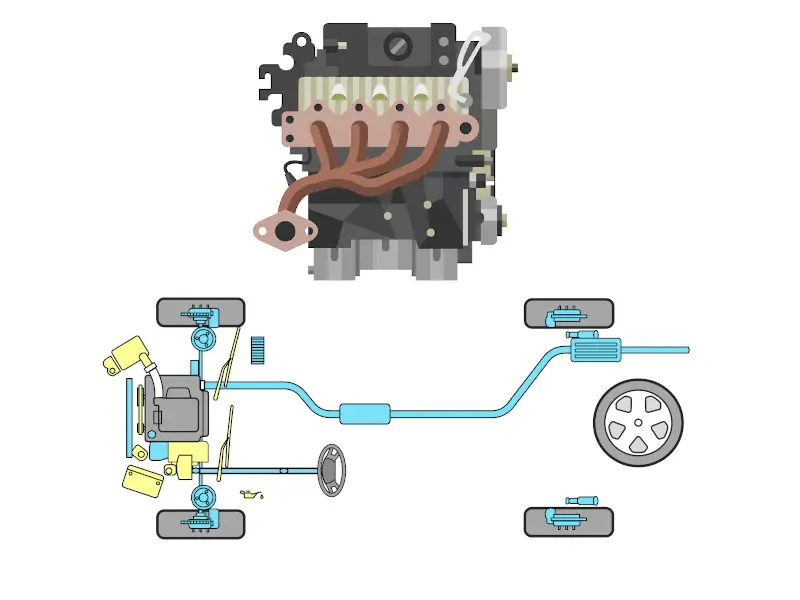
There are very few things about the engine that are minor. Back in the day all you had to do was spray some Gumout cleaner into the carburetor, check plug wires, and add some oil…. Now, everything is fuel injected and computer-controlled. If you’re not careful, even Minor and Major issues quickly escalate to Critical level.
Minor issues:- Old spark plugs
- Dirty air filters or cabin filters
- Battery connectors that are corroding
- Worn or missing belts or parts (alternator, solenoid, etc)
- Rusted pipes near the exhaust manifold
- Low fluids or puddles of fluid under the vehicle
- Non-functioning gauges (Temperature, RPMs, fuel, oil)
- Check Engine Light (MIL) illuminated… or other ABS, SRS, Temperature lights on.
- No Maintenance records. If the previous owner cared about their ride, they should have a “maintenance log” they can share.
- Non-start. It might be a bad battery, but if the engine is slow to crank over, there’s possibility for expensive repairs.
- Failing timing belt or head gasket
- Transmission slips
- Noisy exhaust with missing catalytic converter or muffler
All of these Major and Critical issues might even be considered Deal Breakers if you don’t have stacks of cash lying around.
Deal Breakers would be any combination of the critical issues because, together, they would add up to more than the car would be worth.- Cracked block
- Seized piston
- Trashed transmission
When it comes to the engine, this is arguably the most expensive areas of your vehicle and you gotta make sure the previous owner took good care of it.
[/su_panel]Step 5 – Test Drive

As stated earlier, if you’re test driving a car sold by a Private Party, bring a friend with you for safety. Bonus points if your friend is a mechanic or knows what to look for with used cars 🙂
Usually, a test drive will highlight issues with a car. A lot of those will be the same that you found during your inspection. Some would not. Here’s how to conduct a test drive:
- Be courteous and honest with the seller – This isn’t your car (yet) so do not drive it like you stole it. If there’s something that concerns you during the drive, ask the seller about it. No burnouts or Neutral Drop‘s! 😀
- Use of your senses – Ears, is there a strange noise, clunking, anything? Eyes, anything visibly broken or missing? Noise, notice a funny smell?
- Start it up and let it idle – Is it hard to start? Does it idle smooth? Any dashboard lights on?
- Get to an open road or highway and floor it – Now you gotta be careful with this one, don’t do burnouts or anything, but you want to see how the engine gets up to interstate speeds (75+ MPH) and listen to how it shift and pulls. Does it miss a gear, shake, make funny noises, etc? Did it rattle when accelerating? While you’re at this speed, try out the Cruise Control and listen for wind noise.
- Check for straight driving – on a clear road, try letting go of the steering wheel for a few seconds and see if the car pulls to the side or goes straight. Is the steering wheel horizontal? Does the steering wheel vibrate?
- Test the brakes – Gently press the brake and feel for shakes. This could indicate warped rotors or drums. Firmly press the brakes; did the car stop quickly? If not, you may have a bad brake booster.
- Full lock turns – In a parking lot at low speed, turn the steering wheel all the way to the left and listen for clicking or rubbing. Do the same in the other direction.
- Dash Lights – Are there any lights illuminated like Oil, Temperature, Check Engine? Do all the gauges work and show normal readings?
- Aftermarket Modifications – This is usually done during the inspection stage but can show up in the Test Drive stage also. Look for aftermarket bodykits, lowered or lifted suspension, larger-than-stock wheels and tires, tuners, turbos and exhaust. There are exceptions, but this is usually a sign the vehicle was used more heavily than a stock car or pickup.
EricTheCarGuy did an entire video series on buying a used car. Check out his Youtube page for more. Here’s his guide to the Test Drive:
Common Things to Watch For
Bad wheel alignment is something that usually shows up in a test drive . That’s a major issue because it will cause hazardous handling, uneven tire wear, and low fuel mileage. Look for steering wheel shaking or the vehicle mysteriously pulling to the left or right.
Critical items like bad bearings, tie rods, and “mysterious grinding noises” could show up while driving too. In fact, many such noises aren’t bad things at all, but they require a trained professional to find, diagnose, and fix.
Other noises are not so mysterious, such as a bad exhaust system or grinding gears in the transmission. If the car is a stick shift, feel for a slipping clutch or trouble shifting. Make sure to run through all the gears, including reverse!
Steering that’s out-of-adjustment is painfully obvious… If you turn the wheel and your car doesn’t turn, watch out!
Any of these can be a deal-breaker if you don’t have the funds to repair them. Even if you can secure financing for the car itself, the repairs aren’t covered, and most banks won’t lend you unsecured money for car repairs. There also aren’t car versions of “second mortgages.”
Flood damage. If you live in Southern states or areas prone to flooding like Georgia, Lousiana, or Florida , be on the alert for vehicles that have been submerged underwater. Rust under the body, moisture in lights, musty interior smell are all signs that the car was submerged and you should stay away!
[/su_panel]Other Considerations
If you’re not a Gearhead then consider taking the pre-owned car to a trusted garage. If possible, take it to a shop that specializes in the vehicle brand. For example, looking at a used Subaru? Take it to a Subaru shop. They’ll know all about the nuances to Subaru’s (like head gaskets and front suspension rattle).
Most shops should charge less than $100 bucks to do a thorough inspection.
Insurance Costs
Check with your auto insurance company to determine what your 6-month premiums will be. If you’re less than 25 years of age, then buying a red Corvette Z06, even if the deal is terrific, might be a poor idea. The price of insurance could be hundreds each month!
Certified Pre-Owned

If you’re buying from the dealer and not a private seller, find out if there is any warranty that comes with the purchase. Many dealers will offer a Certified Pre-Owned, or CPO, which means they’ve been inspected and often come with a warranty.
Financing
If you don’t have the cash on the hand, then you are going to need financing. Shop around for the best rates. A popular trick is to use home equity to buy a car instead of an auto loan. Lines of credit have better interest rates than auto loans. Part of your checklist would be to find a bank or other lender who allows this kind of transaction. Make sure that you know all of the ins and outs of your loan contract. After doing your due diligence with the car itself, it would be a shame if you lost it to repossession.
Expected Mileage
Quality cars tend to last. If you buy a five-year-old car that has 60,000 miles on it, how many more miles do you expect to get from the vehicle? The answer depends on the make and model of your car. While some used vehicles sputter out at 110,000 miles, reliable used cars stay on the road beyond 200,000 miles.
Safety Assessment
Your car’s safety features are important for running errands or taking long trips. The NHTSA and the IIHS make it easy to pick a used car that’s safe. They set safety ratings for cars based on front, side, and rear crash tests. Enter a car’s year, make, and model into the NHTSA’s safety rating tool to find out how your chosen used vehicle measures up.
(Click the links to view their safety ratings)
High Fuel Economy
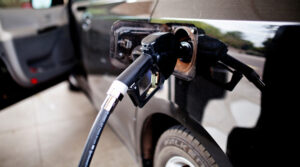
When buying a car, you’ll want a fuel-efficient model. The Environmental Protection Agency (EPA) sets fuel mileage ratings for new cars. Car experts believe that used cars that were made within the last decade don’t lose gas mileage due to age. Poor and inconsistent maintenance are the main causes of lower gas mileage in used cars versus new cars.
Get it in Writing
If you decide to make the deal, put it on paper. Document what you pay and get a receipt. If there are any other stipulations to the deal, which are rare in private sales, be sure they’re on paper too. Give the seller a copy of the applicable paperwork, collect the title and other relevant documents, and drive safe.
Bonus: Popular Mechanics’ Used Car Checklist PDF
Back in 2016, Popular Mechanics wrote an epic guide to buying a used vehicle and not getting burned. In that article was a 101-Point Checklist PDF that you can print out and take with you.
Click here to get the Used Car Inspection Checklist PDF
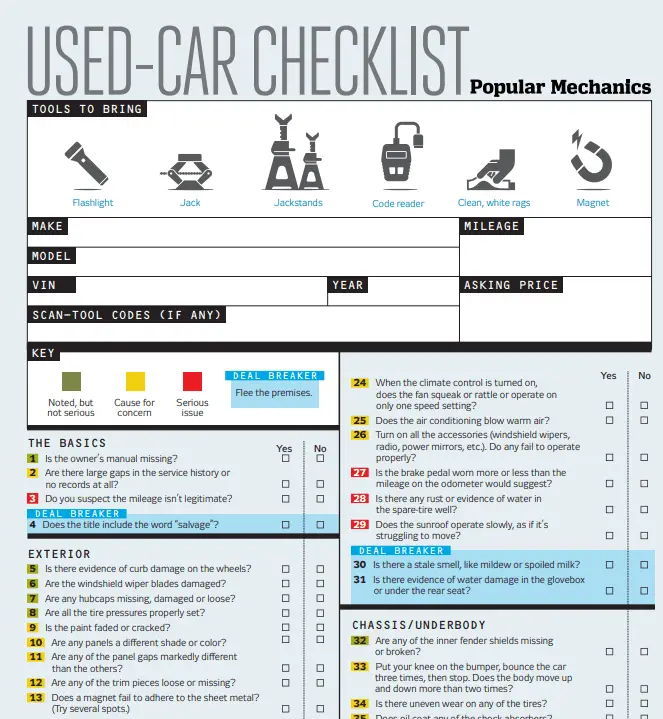
Understanding Used Car Categories (with examples)
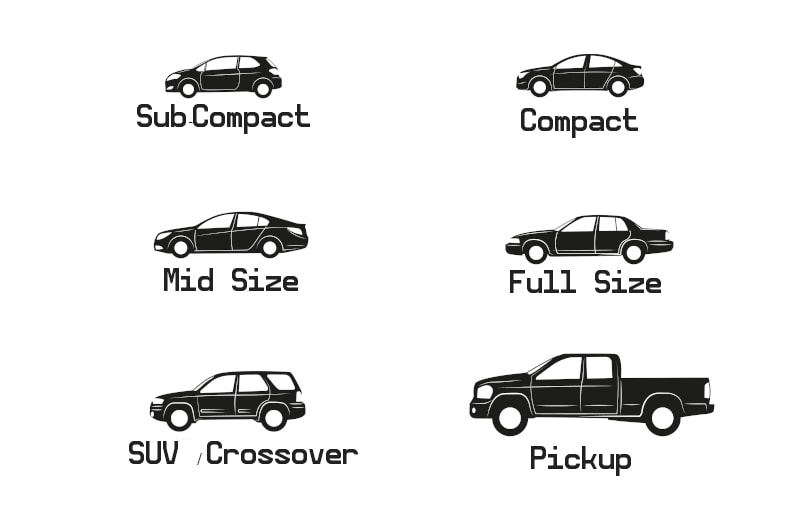
Cars are sold in categories that are based on size and style. Knowing the type of car that you want helps you to narrow your search and remain within your budget. Here are some common car types that you’ll likely encounter during your used car search.
[su_panel background=”#ffff” shadow=”2px 2px 2px #eeeeee” radius=”4″]1. Subcompact
According to the EPA’s vehicle size classification, a subcompact car is a vehicle that has 85 – 99 cubic feet of passenger and cargo space. The Nissan Versa, the Toyota Yaris, and the Honda Fit are examples of subcompact cars.
2. Compact
If you’re in the market for a compact car, expect to get 100-109 cubic feet of passenger and cargo space with your sale. The Chevrolet Cobalt, the Ford Focus, and the Honda Civic are a few compact vehicles.
3. Mid-Size
A mid-size sedan has 110-119 cubic feet of passenger and cargo space. The Mazda 6, the Kia Optima, and the Subaru Legacy are examples of mid-size cars.
4. Full-Size
A full-size or large car has at least 120 cubic feet of passenger and cargo space. Some examples of full-size cars include the Chrysler 300, the Nissan Maxima, and Buick Lucerne.
5. SUV/Crossovers
Sport Utility Vehicles (SUVs) come in small and standard subcategories that are measured by weight. Small SUVs weigh less than 6,000 pounds, and standard SUVs are between 6,000 pounds and 9,999 pounds.
6. Pickup (Truck)
Measured in terms of Half-ton, 3/4 Ton, and 1 Ton, these vehicles are built for hauling, towing and getting work done. Most modern trucks are versatile and some like the Ram EcoDiesel have a whopping 32 MPG (highway) rating!
[/su_panel]
Final Thoughts
At the end of the day, doing this used car inspection checklist isn’t everything. Sometimes, you just “get a feeling.” Maybe your mechanic friend “gets a feeling.” If that happens, don’t be afraid to walk away. There will be other days and other cars. Be safe, and happy motoring!
-Mike